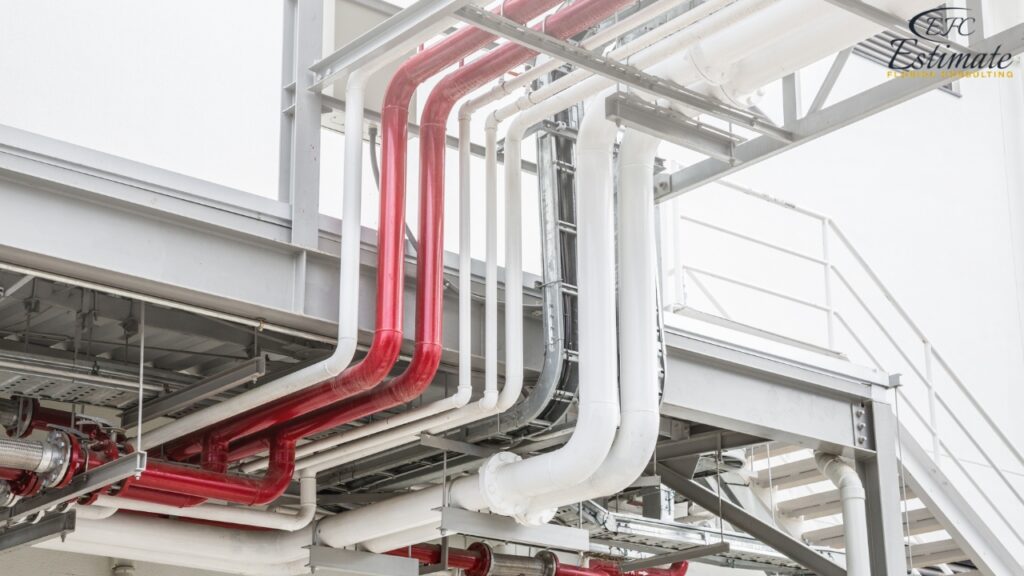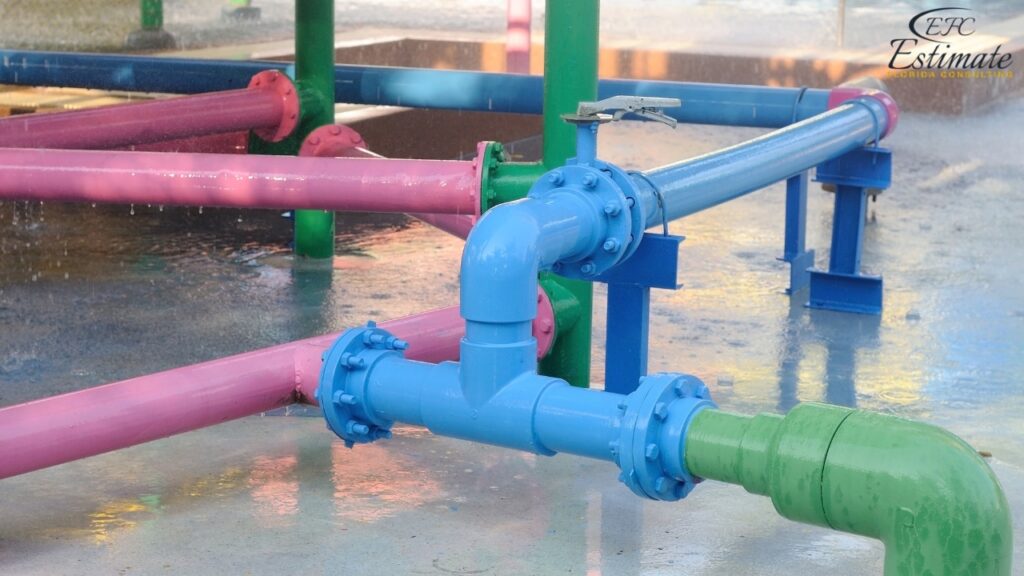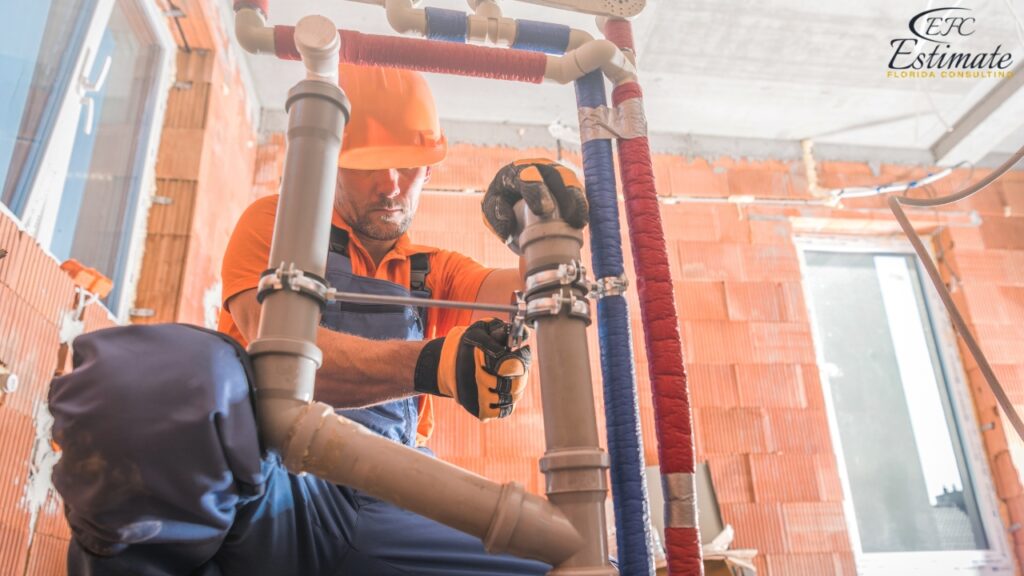How Much Does It Cost to Repipe a Whole House?
Repiping a whole house typically costs between $14,170 and $73,645, or about $3 to $15 per square foot. This price includes materials, labor, permits, and replacing all water lines with new pipes like PEX, copper, or CPVC. Costs can vary based on the size of the house, the complexity of the job, local labor rates, and the type of piping material chosen. Additional expenses may come up if accessing pipes within walls or floors requires extra work and repairs. Hiring professionals for repiping ensures better water pressure, improved quality, and reduced risk of leaks, enhancing your home’s overall value and safety. Proper planning and budgeting are key to a successful repiping project.

Factors Influencing the Cost
Size of the House
The size of your house is a primary factor in determining the cost of repiping. Larger homes require more materials and labor, increasing the overall expense. The number of bathrooms, kitchens, and additional water fixtures also plays a significant role. In a small house, repiping might involve fewer pipes and connections, whereas a large house with multiple levels and numerous fixtures will need more extensive work.
House Size | Estimated Cost |
Small (1,000 – 1,500 sq ft) | $5,200 – $10,400 |
Medium (1,500 – 2,500 sq ft) | $7,800 – $15,600 |
Large (2,500 – 3,500 sq ft) | $10,400 – $20,800 |
Extra Large (3,500+ sq ft) | $13,000 – $26,000+ |
Larger homes with multiple bathrooms and kitchens will naturally have higher costs due to the increased amount of piping and fixtures that need to be replaced. Additionally, homes with complex layouts or hard-to-reach areas may incur higher labor costs. It’s important to consider the specific needs of your home, as well as any unique features or challenges that might affect the repiping process.
Type of Pipes
The type of pipes you choose can significantly impact the cost of repiping. Common materials include PEX (cross-linked polyethylene), copper, and CPVC (chlorinated polyvinyl chloride). Each material has its advantages and disadvantages, influencing both the upfront cost and long-term performance.
Pipe Type | Estimated Cost per Linear Foot | Total Cost (for 1,500 Linear Feet) |
PEX | $1.95 – $5.20 | $2,925 – $7,800 |
Copper | $3.90 – $10.40 | $5,850 – $15,600 |
CPVC | $3.25 – $6.50 | $4,875 – $9,750 |
PEX piping is often preferred due to its flexibility, lower cost, and ease of installation. Copper is more durable and resistant to leaks but comes at a higher price. CPVC is a good middle ground, offering decent durability and lower cost than copper but higher than PEX. Additionally, the choice of material can affect the overall lifespan and maintenance requirements of your plumbing system. For instance, while copper pipes can last over 50 years, PEX pipes typically have a lifespan of around 25-40 years.
Labor Costs
Labor costs can vary based on the complexity of the installation, local labor rates, and the contractor’s experience. Skilled labor is essential to ensure that the repiping is done correctly and meets local building codes. The labor involved includes removing old pipes, installing new ones, and ensuring that all connections are secure and leak-free.
Labor Task | Estimated Cost per Hour | Total Hours Required | Total Cost |
Plumber | $65 – $195 | 50 – 100 | $3,250 – $19,500 |
Helper/Apprentice | $39 – $78 | 50 – 100 | $1,950 – $7,800 |
The total labor cost will depend on the number of workers required and the duration of the project. Complex installations or homes with difficult access points may require more time and higher labor costs. It’s also important to budget for potential unexpected issues that might arise during the repiping process, such as discovering additional plumbing problems or structural issues that need to be addressed.
Additional Costs
Several additional costs may be associated with repiping a house, including permits, inspections, and potential repairs to walls or floors after the pipes are installed. These costs ensure that the project complies with local regulations and that any disruptions to your home are properly addressed.
Additional Cost | Estimated Cost |
Permits | $130 – $650 |
Inspections | $65 – $195 |
Wall/Floor Repairs | $650 – $2,600 |
Permits and inspections are necessary to ensure that the repiping meets local building codes and safety standards. After the repiping is complete, you may need to repair drywall, flooring, or other surfaces that were disturbed during the installation. These additional costs should be factored into your overall budget. Furthermore, it’s wise to allocate some funds for unforeseen expenses, such as additional repairs or upgrades that might be needed to bring the entire plumbing system up to current standards.
Additional Considerations
Seasonal Timing
The time of year can impact the cost and ease of repiping a house. Scheduling the project during mild weather conditions can prevent delays and reduce complications related to extreme temperatures. Additionally, some contractors may offer discounts during off-peak seasons when demand for plumbing services is lower. Choosing the right time to start your repiping project can help you avoid scheduling conflicts and potentially save on labor costs. Additionally, milder weather can facilitate a smoother installation process, reducing potential risks associated with working in extreme conditions.

Quality Assurance
Ensuring high-quality materials and workmanship is essential for the longevity and performance of your new piping system. Implementing rigorous quality control measures during installation can prevent defects and ensure compliance with standards. Working with a reputable contractor who offers warranties on their work can provide added peace of mind. It is also advisable to check the credentials and reviews of potential contractors to ensure you hire a qualified professional who can deliver the quality results you expect. Regular inspections and adherence to quality standards can prevent costly repairs and ensure the long-term reliability of your new plumbing system.
Environmental Impact
Choosing environmentally friendly materials and practices in repiping can reduce the environmental impact of the project. This includes selecting pipes made from sustainable materials and ensuring proper disposal of old pipes. Some homeowners may also consider installing water-efficient fixtures to further enhance the environmental benefits of their new plumbing system. Additionally, choosing eco-friendly materials can contribute to a healthier living environment by reducing exposure to harmful chemicals and improving indoor air quality. Implementing green building practices can also increase the overall value and appeal of your home.
Financing Options
Financing the repiping of a house may involve exploring different options such as home improvement loans, lines of credit, or personal loans. Understanding the terms and conditions of these options can help homeowners secure the necessary funds. Comparing interest rates, loan terms, and repayment options can ensure you select the best financing solution for your project. Consulting with a financial advisor can also provide insights into the best strategies for managing the costs of your repiping project. Additionally, some lenders may offer special financing programs for energy-efficient or environmentally friendly home improvements.
Steps to Budgeting and Planning
Initial Assessment
Start by conducting an initial assessment of your current plumbing system. Identify the issues you’re experiencing and determine if repiping is the best solution. Consulting with a professional plumber can provide valuable insights and help you understand the scope of the project. During this assessment, it’s important to document any visible signs of damage or wear, such as leaks, corrosion, or water discoloration, to better understand the urgency and extent of the repiping needed. A thorough assessment can also help identify potential challenges and prepare for any additional repairs or upgrades that might be required.
Get 5 New Leads Next 7Days With Our System
- Multi-Family Building
- Hotel Building
- Hospital Building
- Warehouse Building
- High-Rise Building
- Shopping Complex
Getting Quotes
Obtain detailed quotes from multiple contractors to compare costs and services. Ensure that the quotes include a breakdown of materials, labor, and additional costs. This will help you make an informed decision and choose the best contractor for your needs. When reviewing quotes, look for transparency and completeness, and don’t hesitate to ask for clarifications on any aspects that are unclear. A thorough understanding of the quotes will help you avoid hidden costs and ensure you receive fair pricing for the work required. Additionally, consider the reputation and experience of the contractors to ensure you select a reliable and qualified professional.
Setting a Budget
Use the cost breakdowns provided in this guide to estimate the expenses for your project. Set a realistic budget that includes a contingency fund for unexpected costs. Regularly update your budget as you receive quotes and make decisions on materials and features. Staying flexible and prepared for changes can help keep the project on track financially. It is also advisable to factor in a buffer for inflation and market fluctuations, ensuring your budget remains sufficient throughout the duration of the project. A well-planned budget can help you manage costs effectively and avoid financial strain during the repiping process.
Securing Financing
Explore different financing options to fund your project. Meet with lenders to understand your borrowing options and get pre-approved for a loan if necessary. Consider all associated costs, including interest rates and loan fees. Comparing multiple offers can help you secure the best terms. Additionally, understanding the tax implications of your financing choices can help in effective financial planning. Some home improvement projects may also qualify for tax credits or deductions, further offsetting the cost. Properly evaluating your financing options can ensure you select the most cost-effective solution for your repiping project.
Construction Process
Site Preparation
The first step in installing concrete steps is preparing the site. This involves clearing the area, leveling the ground, and setting up necessary infrastructure. Proper site preparation is crucial for a stable and durable installation. Addressing potential issues like soil stability and drainage during this phase can prevent future problems. Conducting thorough site surveys and tests can provide critical information for effective site preparation. Ensuring that the area is free from obstructions and properly graded will facilitate a smoother construction process.
Formwork and Pouring
Once the site is prepared, the formwork is set up to shape the concrete steps. After the formwork is in place, the concrete is poured and left to cure. Ensuring that the formwork is accurate and secure is essential for achieving the desired shape and stability. The quality of the formwork directly impacts the final appearance and structural integrity of the steps. It is also important to monitor the curing process closely to ensure that the concrete sets properly, avoiding cracks and other issues.

Finishing
After the concrete has cured, the steps are finished according to your chosen design. This can include smoothing the surface, adding texture, or applying decorative finishes. Attention to detail in this phase ensures a high-quality finish. Proper finishing techniques not only enhance the aesthetic appeal but also improve the durability and safety of the steps. Sealing the concrete after finishing can protect it from stains and weather damage, extending its lifespan. Hiring skilled craftsmen for this stage can make a significant difference in the overall look and feel of the completed steps.
Final Inspections and Compliance
Before the project is considered complete, the concrete steps must pass final inspections to ensure they meet all building codes and standards. Address any issues identified during the inspections promptly. Conducting a thorough walk-through with your contractor can help identify any final adjustments needed. Creating a detailed punch list can ensure that all aspects of the construction are completed to your satisfaction. Proper documentation and certification of the work can provide peace of mind and legal compliance, protecting your investment.
Long-Term Considerations
Durability and Lifespan
Concrete steps are known for their durability and long lifespan. Regular maintenance and proper installation can ensure they last for decades without significant deterioration. Choosing high-quality materials and finishes can further enhance the durability of your steps. Additionally, periodic inspections and timely repairs can prevent minor issues from developing into major problems, preserving the structural integrity and appearance of the steps.
Aesthetic Appeal
Concrete steps can be customized to match the aesthetic of your home. Decorative finishes and designs can enhance the visual appeal and increase the value of your property. Incorporating elements such as contrasting borders, embedded tiles, or custom textures can create a unique and attractive look. Properly planned lighting and landscaping around the steps can further enhance their appearance, making them a focal point of your outdoor space.
Safety
Properly installed concrete steps provide a safe and secure way to access different levels of your property. Adding handrails and lighting further enhances safety, especially in outdoor settings. Ensuring that the steps are non-slip and well-lit can prevent accidents and injuries. Compliance with local building codes and standards is crucial for maintaining safety. Regularly checking and maintaining handrails, lighting, and surface textures can ensure ongoing safety for all users.
Download Template For Plumbing Project Breakdown
- Materials list updated to the zip code
- Fast delivery
- Data base of general contractors and sub-contractors
- Local estimators

Conclusion
Installing concrete steps involves various costs and considerations. By understanding these factors, you can create a realistic budget and ensure the successful completion of your project. Whether you’re looking for basic functionality or a decorative touch, planning and attention to detail can help you achieve the desired outcome while staying within budget. Working with experienced professionals and considering all relevant factors will lead to a durable and aesthetically pleasing set of concrete steps that enhance the value and usability of your property. Investing time and effort in thorough planning and research can yield a set of steps that is not only functional and safe but also a beautiful addition to your home.
FAQs
Repiping a whole house typically costs between $14,170 and $73,645, or about $3 to $15 per square foot. This price includes materials, labor, permits, and replacing all water lines with new pipes such as PEX, copper, or CPVC.
Several factors influence the cost, including the size of the house, type of pipes, labor costs, additional costs for permits and inspections, and any necessary repairs to walls or floors.
Larger homes require more materials and labor, increasing the overall cost. The number of bathrooms, kitchens, and additional water fixtures also impacts the price.
Here’s a breakdown by house size:
- Small (1,000 – 1,500 sq ft): $5,200 – $10,400
- Medium (1,500 – 2,500 sq ft): $7,800 – $15,600
- Large (2,500 – 3,500 sq ft): $10,400 – $20,800
- Extra Large (3,500+ sq ft): $13,000 – $26,000+
The type of pipes chosen can significantly impact the cost. PEX is generally less expensive, while copper is more durable but costlier. CPVC is a mid-range option.
Here’s a breakdown by pipe type:
- PEX: $1.95 – $5.20 per linear foot, Total for 1,500 linear feet: $2,925 – $7,800
- Copper: $3.90 – $10.40 per linear foot, Total for 1,500 linear feet: $5,850 – $15,600
- CPVC: $3.25 – $6.50 per linear foot, Total for 1,500 linear feet: $4,875 – $9,750
Labor costs vary based on the complexity of the installation, local labor rates, and the contractor’s experience. Skilled labor ensures proper installation and compliance with local building codes.
Here’s an estimate:
- Plumber: $65 – $195 per hour, Total: $3,250 – $19,500
- Helper/Apprentice: $39 – $78 per hour, Total: $1,950 – $7,800
Additional costs may include permits, inspections, and potential repairs to walls or floors after the pipes are installed.
Google Reviews



Process To Get Repipe a Whole House Estimate Report
Here I am going to share some steps to get repipe a whole house estimate report.
-
You need to send your plan to us.
You can send us your plan on info@estimatorflorida.com
-
You receive a quote for your project.
Before starting your project, we send you a quote for your service. That quote will have detailed information about your project. Here you will get information about the size, difficulty, complexity and bid date when determining pricing.
-
Get Estimate Report
Our team will takeoff and estimate your project. When we deliver you’ll receive a PDF and an Excel file of your estimate. We can also offer construction lead generation services for the jobs you’d like to pursue further.

